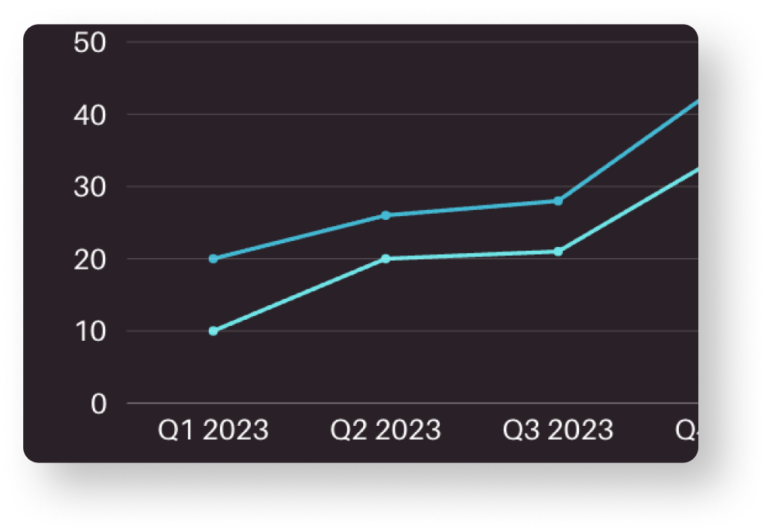FTC Regulations: How Are Brands and Influencers Still Breaking The Rules?

- 1. Neglecting To Disclose Brand Partnerships
- 2. Burying Disclosures Within The Post
- 3. Posting Ambiguous Disclosures
- 4. Thanking The Brand
- 5. Including A General Disclosure In Your Instagram Bio
- 6. Adding Disclosures After Posting
- 7. Neglecting To Disclose Partnerships On Instagram Stories
- 8. Posting A Fake Testimonial
- 9. What Are The Advertiser’s Responsibilities For What Influencers Say?
- 10. Wrapping Up
As influencer marketing continues to grow on Instagram, so do the Federal Trade Commission (FTC) complaint-disclosures for sponsored content. With hundreds of sponsored influencer posts appearing on users’ Instagram feeds every day, more than half of them violate the FTC’s partnership disclosure rules and the FTC is cracking down on brands and influencers who post endorsements on social media.
In April, the FTC sent influencers and brands educational letters reminding them that if influencers are endorsing a brand and have a “material collection to the marketer,” the relationship must clearly be disclosed within the post so viewers are aware that the post is a result of a partnership. What exactly does “material connection” mean? It’s a connection between a brand and an influencer that might affect the credibility or weight of a social media endorsement.
Related: Mastering the Art of Instagram Influencer Marketing
A material connection can range from a brand that compensates an influencer with a sponsored fee in exchange for their endorsement, or a brand that gives an influencer free product in exchange for their review. In other words, if the influencer isn’t sharing their thoughts or opinions about a brand and its products or services organically, they need to clearly disclose their motive for posting or specify that their post is an advertisement.
Here’s how influencers and brands are still breaking the FTC’s disclosure rules on Instagram:
Neglecting To Disclose Brand Partnerships
Influencers are neglecting to disclose their sponsored partnerships to their followers within their Instagram posts, plain and simple. Whether it’s as obvious as not including “#Sponsored” or “#Ad” within their caption or as sneaky as only tagging the brand in the photo or video and not disclosing the terms of the partnership in the caption, influencers are misleading their followers into believing their post is organic.
Although the FTC doesn’t dictate how influencers disclose their sponsored partnerships, they require that each influencer makes it clear to their followers that their post is a result of a partnership with one or more brands.
Related: Instagram’s New Branded Content Tagging Feature
A disclosure example that the FTC recently provided within their endorsement guide is, “Company X sent me free product to review” or “The products featured within this post were gifted to me by Company X.” If the influencer doesn’t specify the terms of the sponsored partnership, they must indicate that it is an advertisement by using the hashtags: #Sponsored or #Advertisement. As long as influencers clearly indicate that the post isn’t organic and that they were compensated in some way, they’re in the clear.
Burying Disclosures Within The Post
We’ve all seen influencers on Instagram that end their captions with 10-20 hashtags, and let’s be honest, the likelihood of viewers reading each hashtag is slim to none. Placing #Sponsored or #Ad in the middle of a string of hashtags isn’t an effective indication that the post is sponsored and the FTC won’t consider that a proper disclosure.
A proper disclosure should be placed where it easily catches the potential consumer’s attention and is difficult to for them to miss. Since the FTC doesn’t specify where in the post the influencer must place these hashtags, they set guidelines on where they should not place these hashtags. The FTC does not accept advertisement hashtags that are hidden within the post, meaning, the hashtags can’t be mixed in with competing hashtags. It must be easily noticed and understood by their followers, and typically, if #Ad is at the end of several hashtags, the consumer will skip over it.
Another factor to consider in terms of burying disclosures, is that on most smartphones captions with more than four lines long are truncated, meaning that viewers scrolling through their Instagram feed can only see the first three lines within the caption without clicking “…more.” The FTC requires that influencers must disclose the partnership without users having to click “…more.” They request that influencers clearly indicate the partnership within the first three or four lines of their caption, so viewers don’t accidentally skip over the disclosure.
Posting Ambiguous Disclosures
A common trend that influencers have recently been doing to sneak around the disclosure policy, is including ambiguous disclosures within their posts. Posting an ambiguous disclosure such “#Partner” or “#Sp” within an Instagram post is not a clear indication that the post is a result of a collaboration with a brand and the FTC will not consider this a proper partnership disclosure.
Thanking The Brand
Several influencers believe that if they thank the brand that sponsored the post or give them a shoutout within their caption, that qualifies as a proper partnership disclosure. Wrong! Thanking the brand doesn’t properly communicate the terms of the partnership or indicate to their followers that they were compensated for their endorsement.
However, if the influencer says something along the lines of, “ Thank you Company X for sending me the free product,” that disclosure would suffice only if the brand only gave the influencer free product and no monetary compensation. If the brand monetarily compensated the influencer, in addition to sending free product, the influencer would need to disclose whichever would have a more impactful weight on the endorsement.
Meaning, if the brand gave the influencer a free product that was valued at $50, but also paid the influencer $200 to endorse the product, the influencer is held liable to disclose that he or she was compensated $200 for the partnership. So, whenever you see an influencer’s post that is thanking a brand, be wary that they aren’t properly disclosing the terms of their partnership.
Including A General Disclosure In Your Instagram Bio
Influencers who include a general disclosure within their Instagram bio stating that certain posts within their profile may be a result of sponsored partnerships with brands, is not a proper FTC endorsement disclosure. When viewers are scrolling through their Instagram feed, they won’t be able to identify which post is sponsored simply by looking at the photo.
The user would have to visit that influencer’s profile in order to see the disclosure, and even then, it’s unclear which post is sponsored and the bio description can easily be overlooked. A disclosure must be close to, or part of, the endorsement in which it relates to.
Adding Disclosures After Posting
Instagram allows users to edit captions after their photo is posted, regardless of a specific timeframe. This is useful for things such as adding relevant hashtags, tagging brands within the caption or photo, or correcting typos, however, it also allows influencers to go back and add disclosures retroactively.
In an attempt to avoid FTC’s scrutiny, influencers have been editing their posts after it has already been seen and engaged with by their followers, and adding proper sponsorship disclosures. Without proper disclosure when the post is initially created, the post will appear to be organic, which violates the FTC’s policy and will result in an FTC complaint-disclosure.
Neglecting To Disclose Partnerships On Instagram Stories
Several influencers are unaware that they must also superimpose a disclosure on their Instagram Stories, in addition to their Instagram posts. The disclosure must be in an easy-to-read font and size, allowing viewers to read the disclosure during the time they have to look at the image.
The disclosure must also be separated from competing text and easily read against the image in the background. Another factor to consider is that if the influencer’s Instagram Story is a video, and they are including an audio disclosure, they must also provide a text disclosure. The reason for this is that users have to choose to turn on the sound to listen to Instagram Stories, and if they don’t turn on the sound, they will miss the disclosure and can easily be mislead.
Posting A Fake Testimonial
The most important principle of an endorsement is that it must represent an accurate experience or the genuine opinion of the influencer endorsing the product or brand. According to the FTC’s endorsement guidelines, an influencer isn’t allowed to discuss an experience if they have never personally tried a product or service.
The FTC regulates the claims that influencers make and each influencer is subject to liability for making claims without having proof. Also, if the influencer genuinely doesn’t like the product or brand they partnered with, they must disclose their genuine feelings and aren’t allowed to share a fake testimonial with their followers.
What Are The Advertiser’s Responsibilities For What Influencers Say?
Advertisers are responsible for having programs in place to mentor the influencers within their network and outlining the specific disclosure guidelines in which they must follow. The brand must also periodically search for what the influencers they partnered with are saying and if they see any questionable practices, they must follow-up with that influencer to properly correct the issue.
Related: How to Perfect Your Influencer Marketing Strategy
The FTC doesn’t expect advertisers to be aware of every single statement that is made by a member of their network. However, it is up to the advertiser to make a reasonable effort to monitor and regulate what their influencers are saying and adjust their program accordingly. If a brand has a reasonable training, monitoring and compliance program set in place, severe issues are less likely to arise.
As mentioned, the FTC periodically conducts investigations and either sends an educational letter to influencers and brands who have previously neglected to disclose partnership details or, if severe enough, brings cases involving wrongful endorsement disclosure made on behalf of an advertiser and prohibits deceptive advertising.
Wrapping Up
So, what is the proper disclosure for a sponsored post? Although there’s not a “one size fits all” disclosure requirement, the FTC requires that both brands and influencers have a program in place to follow their endorsement guidelines. Influencers need to clearly explain the nature of the relationship between them and the brand they’re working with so that potential consumers are aware that the endorsement is a result of a sponsored partnership.
Whether it’s as simple as including disclosure hashtags such as #Sponsored and #Advertisement, clearly set apart from competing hashtags, or a statement such as, Company X sent me free product to review,” either indication will suffice. Just know, that that FTC is closely monitoring both brands and influencers to ensure that each sponsored partnership is following their endorsement disclosure policy, and the influencers who are still breaking the rules will be notified.
Our Editorial Standards
Reviewed for Accuracy
Every piece is fact-checked for precision.
Up-to-Date Research
We reflect the latest trends and insights.
Credible References
Backed by trusted industry sources.
Actionable & Insight-Driven
Strategic takeaways for real results.








